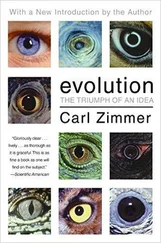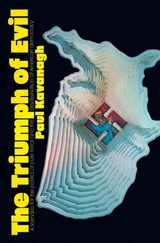Although the “psychological profile” in the sense outlined above went out of fashion around the year 1930, it soon re-emerged in a new context of knowledge from where it would go on to gain widespread popularity in the late twentieth century. After the Second World War, concerted efforts were made in the United States to get to the bottom of unsolved crimes (especially those thought to have been committed by repeat offenders), and these efforts led to increased cooperation between criminologists and psychoanalysts. Just as conventional police work sought to analyze the material clues left at a crime scene in order to come closer to identifying the perpetrator, by means of fingerprints or bullet shells, the forensic-psychological perspective began to concentrate on immaterial and emotional clues – on the question, that is, of how such things as hatred, anger, rage, passion, or other eruptions of inner feelings might have left traces at the scene of a crime. Although this search for impressions left by the criminal personality – this practice of criminal-psychological ballistics – played a part in solving a number of spectacular serial crimes as early as the 1950s (for instance, the case of New York's “mad bomber,” George Metesky), the method was first described as “psychiatric profiling” in a 1962 essay about notorious arsonists by the psychoanalyst Louis Gold. 9
One major difference distinguished the “psychiatric profile” of criminology from the earlier use of the term in applied psychology: it was now the case that unknown persons were meant to be identified by means of this gathering of knowledge. The test was replaced by the manhunt, and a quantifiable scientific statement was replaced by a hypothesis. At this early stage, this new tracking technique depended on the charisma and almost prophetic intuition of individual forensic psychologists such as James Brussel. It was not until the end of the 1970s that “criminal profiles,” as they are now known, were formulated in a systematic manner, and this development took place at a newly established division of the FBI called the “Behavioral Science Unit.” Here, psychologists and criminologists were tasked with testing new methods in response to the rising crime rate in the United States. Ever since the 1960s, according to the FBI, not only had the number of unsolved murders been growing – statistics showed that cases in which the offender was unknown to the victim had increased from 10 to 30 percent of the total. Richard Ault and James Reese, whose foundational essay on the new method appeared in the in-house journal, the FBI Law Enforcement Bulletin , made the following observation: “As the crime rate grows in this country and the criminals become more sophisticated, the investigative tools of the police officer must also become more sophisticated. One such sophisticated tool … is the psychological assessment of crime – profiling.” 10
According to Ault and Reese, profiling would enable detectives to decipher the behavioral patterns and motives of criminals on the basis of clues left behind at the scenes of unsolved violent crimes. One of the directors of the Behavioral Science Unit summarized this strategy concisely: “Knowing ‘why’ will often tell us ‘who.’” 11 From the state of the crime scene, detectives could tell whether the offender's methods were organized or unorganized, and on the basis of this simple difference they could begin to narrow down the possible identity of the unknown criminal. Did he live in the immediate vicinity of the victim? Would his apartment be messy or clean? Were they dealing with an eloquent or socially excluded perpetrator? White or black? Fat or skinny (forensic psychologists were convinced that certain mental illnesses manifested themselves in ascetic eating behavior)? At the beginning of their pioneering article, Ault and Reese claim that a series of seven rapes, each with the same recognizable modus operandi, could be solved within a week after the creation of a criminal profile. The latter might contain some of the following conjectured information: “1) The perpetrator's race, 2) Sex, 3) Age range, 4) Marital status, 5) General employment, 6) Reaction to questioning by police, 7) Degree of sexual maturing, 8) Whether the individual might strike again, 9) The possibility that he/she has committed a similar offense in the past, 10) Possible police record.” 12
In 1980, the FBI's Law Enforcement Bulletin was devoted entirely to this new form of tracking. Ault and Reese's article is followed by several others in which the concept of the criminal profile is applied specifically to cases of arson or sexual violence. Moreover, the staff of the Behavioral Science Unit began to conduct a long-term series of psychological interviews with convicted mass murderers. In all of this, the ambition to distill individual mental features from a series of crimes was inextricably tied to the presumed illness of the offender in question. As early as 1962, Louis Gold remarked: “It is generally accepted that a person who sets a fire intentionally is committing an abnormal act. His reasoning at this time is perverse, distorted.… The roots of such perverse and aberrant behavior are deep within the personality and have some relationship to sexual disturbance.” 13 Ault and Reese likewise underscored the following point: “It is most important that this investigative technique be confined chiefly to crimes against the person where the motive is lacking and where there is sufficient data to recognize the presence of psychopathology at the crime scenes.” 14 Profiles were thus created only when no apparent meaning could be derived from the crime itself; on the basis of chaotic crime scenes, they were meant to bring to light the rationality and comparability that the wild rage of the perpetrator had initially obscured. “Psychological profiling,” as Anthony Rider noted about arsonists in particular, “should be applied only to those cases in which the unknown subject demonstrates some form of mental, emotional, or behavioral disturbance in the crime. Unless there is perceptible psychopathology present in the crime, a profile cannot be rendered on an unknown subject.” 15
For the FBI, the condition of possibility for the criminal profile was thus the insanity of the offender. The number of cases in which this new method was applied in the United States grew rapidly (in 1979 there were only 65, and in 1980 this number already surpassed 200), while in Germany the first criminal profile – commissioned, incidentally, by the FBI – was created in 1984. 16 The method did not receive widespread public attention, however, until the beginning of the 1990s, and this was largely due to the film The Silence of the Lambs , in which an FBI agent trained in psychology manages to convict a serial killer. In the wake of this movie, the work of the “profiler” became a phenomenon of popular culture. A few veterans from the Behavioral Science Unit, such as Robert Ressler and John Douglas, published successful memoirs, and their type of activity has since become a fundamental component of numerous crime shows on television, among them Criminal Minds , Millennium , Cracker , and Profiler .
What a brief conceptual history of the profile reveals at once is the fact that, for an entire century, this format has been used to describe individuals in situations involving tests or manhunts. In light of Foucault's fundamental insight that, since the late eighteenth century, knowledge about human beings has been generated predominantly by marginal subjects – that the question of how to track down identities or measure bodies was driven above all by the psychiatric registration of the sick and by the police's access to criminals – it can be said that this trend was consolidated in the knowledge format of the profile. Its object was someone under evaluation or being hunted, and its creators were representatives of state authority, police authority, or scientific authority. In the profiles of the twentieth century, the relations of institutional power were realized with particular clarity. To this extent, the success stories of psychiatry and criminology can be told alongside the genesis of their registration and recording techniques. 17
Читать дальше












